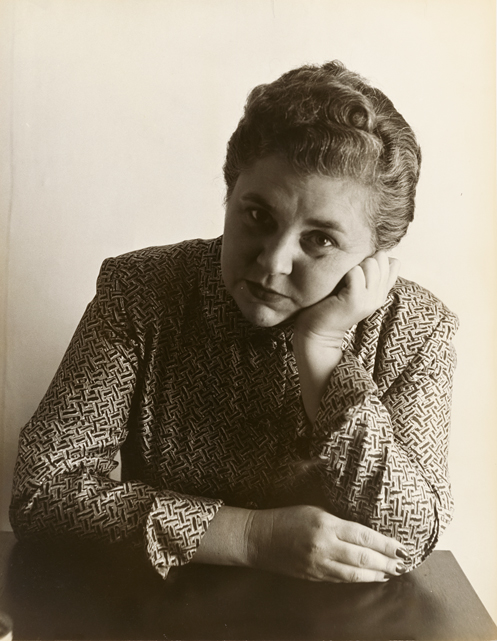Elizabeth Bishop 1911-1979
Rollie McKenna (1918–2003)
Gelatin Silver Print, 1951

© Rosalie Thorne McKenna Foundation, Courtesy Center for Creative Photography, University of Arizona Foundation
Elizabeth Bishop seemed able to thrive as a writer precisely because she could draw strength from the instability of her daily life. Writing filled the voids for her. Bishop’s voluminous and sharp-eyed correspondence created a web of relationships on which she could rely. And her hard-earned poems grew, like desert plants, out of the absence of things. Bishop was galvanized by having, she thought, nothing to lose and thus everything to gain. Concluding her poem “One Art,” she breaks the inviolate seamlessness of her verse with a parenthetical exhortation to herself: “the art of losing’s not too hard to master / though it may look like (Write it!) like disaster.” Bishop’s sense of a wound, however it was inflicted—poverty, lack of family, alcohol, depression—meant that she always kept her guard up in her work, writing slowly and meticulously, carefully fashioning the world of words that she could control.
The art of losing isn’t hard to master; so many things seem filled with the intent to be lost that their loss is no disaster, Lose something every day. Accept the fluster of lost door keys, the hour badly spent. The art of losing isn’t hard to master.Elizabeth Bishop From “One Art,” 1976
